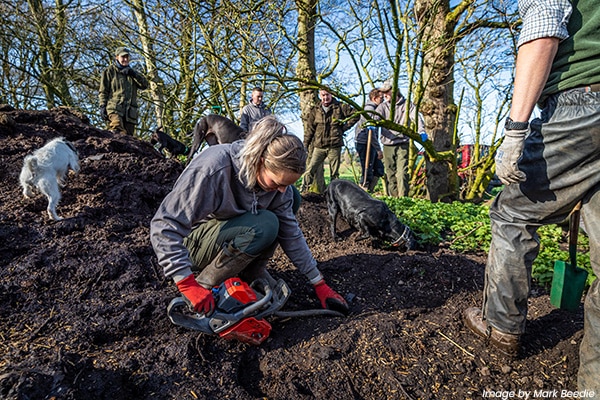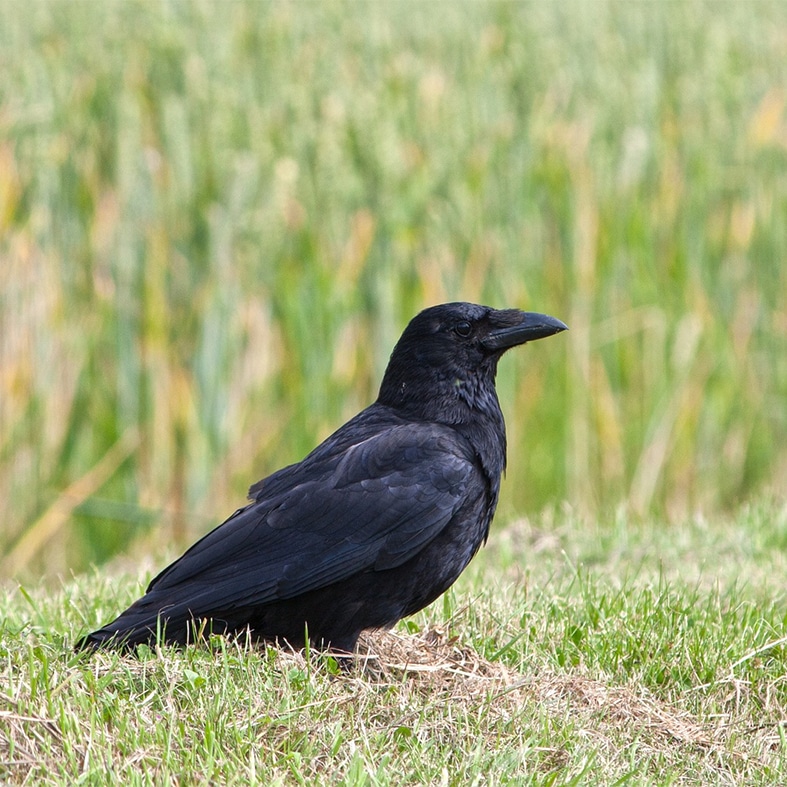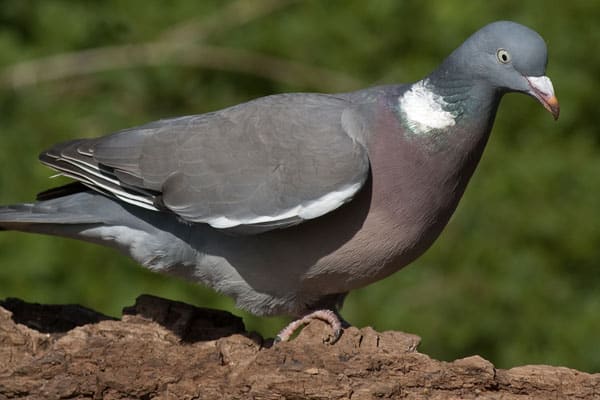
Pest and predator control courses
We run a wide range of courses, covering all areas of shooting, including an introduction to woodpigeon shooting.
Get information on the legal shooting season for mammals and birds in the UK.
Learn about our current conservation projects and how you can get involved.
Comprehensive information and advice from our specialist firearms team.
Everything you need to know about shotgun, rifle and airgun ammunition.
Find our up-to-date information, advice and links to government resources.
Everything you need to know on firearms law and licensing.
All the latest news and advice on general licences and how they affect you.


Pest and Predator Control Trapping pest birds in the UK
Pest and predator control is an integral part of conservation and wildlife management. It is necessary to reduce predation and damage to acceptable levels, particularly at vulnerable times of the year such as the nesting season.
It is the responsibility of all those involved in pest and predator control to ensure that their methods are legal, humane and carried out with sensitivity and respect for other countryside users.
High standards underpin public and political support for pest and predator control, now and in the future.
The code provides advice at two levels:
The following golden rules apply:
In England, Wales and Scotland under the Wildlife and Countryside Act 1981, Section 5, and in Northern Ireland under the Wildlife (Northern Ireland) Order 1985 Section 6, it is illegal to:
Under Section 8 (1) of the Wildlife and Countryside Act 1981 and Section 9 (1) of the Wildlife (Northern Ireland) Order 1985, it is an offence, liable to a special penalty, to keep or confine any bird in any cage or receptacle which is not sufficient in height, length or breadth to permit the bird to stretch its wings freely.
Under the Wildlife and Countryside Act 1981, Section 6, and the Wildlife (Northern Ireland) Order 1985, Section 7, it is illegal to sell decoy birds.
The trapping of pest birds is permitted under the authority of relevant general licences issued by the Department for Environment Food & Rural Affairs (DEFRA) for England, Natural Resources Wales (NRW) for Wales, NatureScot for Scotland, and the Department of Agriculture, Environment and Rural Affairs (DAERA) for Northern Ireland.
No individual application is required for these licences; however, it is essential that you comply fully with the terms and conditions of any relevant general licence. Details of general licences can be found here.
General licences authorise the control of specified species for defined purposes listed on the relevant licence, such as preventing serious damage. If a species, location or reason for control is not covered by a general licence, an individual licence must be applied for from the relevant authority.
Depending on which home country you are operating in, on certain designated sites the use of a general licence may not be applicable (there are details around any such site restrictions listed on each relevant licence).
Permission (known as ‘consent’) from the relevant government agency may also be required.
The species listed on the general licences and the purposes for which the licences are issued can vary between countries.
BASC strongly recommends that anyone wishing to carry out the trapping of pest birds under the authority of a general licence should read the advice found here.
Control methods allowed under the general licence may include shooting, the destruction of eggs and nests, and the use of Larsen traps and multi-catch traps, which include the use of decoy birds within such traps.
Anyone acting under a licence issued by a government agency must comply with all relevant animal welfare legislation including the Animal Welfare Act 2006, the Animal Health and Welfare (Scotland) Act 2006, and the Welfare of Animals Act (Northern Ireland) 2011.
General licences can only be used by authorised persons. Each government agency defines ‘authorised persons’ differently. Please see the relevant licence for the full definitions.
Decoy birds must be provided with:
Every cage trap used in accordance with the general licences in England, Wales and Scotland must be physically inspected at least once every day. In Scotland, they should be inspected at intervals of no more than 24 hours; in England and Wales, they should be inspected at intervals of no more than 25 hours.
Any birds killed in accordance with the general licences must be killed in a quick and humane manner.
The general licences from each of the countries specify the different conditions for the dispatching of target species in view of the decoy or other trapped birds. Please see the relevant licence for the full conditions.
Non-target species caught in a cage trap should be released unharmed immediately upon discovery.
Note: In England and Wales under the Wildlife and Countryside Act 1981, and in Northern Ireland under the Wildlife (Northern Ireland) Order 1985, it is illegal to release or allow to escape into the wild any animal that is not ordinarily resident in and is not a regular visitor to Great Britain in a wild state, or is an animal listed in the Wildlife and Countryside Act 1981, Part 1 of Schedule 9. In Scotland, under the Wildlife and Natural Environment (Scotland) Act 2011, it is illegal to release, or allow to escape from captivity, any animal into a place outside of its native range.
The general licences in England, Wales and Scotland require that when cage traps are not in use they are immobilised and rendered incapable of use. The general licences from each of the countries specify how the trap should be rendered incapable of use.
In Scotland, under the general licence, all trap operators must be registered in advance with NatureScot in order to obtain a registration number. All traps must display a single tag or sign that features the NatureScot trap registration number.
Larsen traps: Usually consist of a cage trap which has a closed compartment for confining a live decoy bird and an additional compartment(s) with a spring-activated trap door either on the top or on the side.
The use of this type of trap is permitted under the general licence and allows an authorised person to keep or confine the birds listed on the general licence in a Larsen cage trap, whose dimensions are smaller than those required by Section 8 (1) of the Wildlife and Countryside Act 1981, and Section 9 (1) of the Wildlife (Northern Ireland) Order 1985.
Note: A decoy bird cannot be held captive in a Larsen trap if the trap is not in use. If the trap is not in use, then the permission authorised by the general licence, which allows a person to confine a bird in a cage smaller than that required by Section 8 (1) of the Wildlife and Countryside Act 1981, and Section 9 (1) of the Wildlife (Northern Ireland) Order 1985, is withdrawn.
Multi-catch traps: There are several types of multi-catch traps available, such as the ladder/letterbox and funnel trap. These traps usually consist of large, timber-framed sections covered in small wire mesh with a door for operators to gain access to the trap. These traps are designed so that the target species can enter by a funnel or narrow opening but cannot escape when they attempt to fly out again.
Larsen Mate/Larsen Pod traps can be used in conjunction with a Larsen trap. They are useful for catching the initial bird to use in a Larsen trap as a decoy bird and are often baited.
They consist of a wire cage frame which is hinged at the bottom and held open by a split perch. When the bird lands on the perch the cage springs together, catching the bird inside.
Note: Each of the government agencies may give different specifications on the design of traps and the type of bait that can be used.
Using a trap on land where you do not have permission is illegal and could result in prosecution.
Any of the birds killed in accordance with the general licences must be killed quickly and humanely.
The displaying of carcasses serves no useful purpose and may offend other countryside users. Carcasses should be disposed of responsibly in accordance with any regulations.
Avoid setting traps near public footpaths or public rights of way. BASC does not recommend the wing clipping of decoy birds.
Cage traps should not be used during severe weather conditions or when such conditions are reasonably expected, which would prevent daily checking.
It is advisable to have adequate legal liability (third-party) insurance when carrying out shooting-related activities. Find out more about the insurance that comes with BASC memberships.
More detailed advice and links to the general licences can be found here.
For further help and advice, call your BASC regional office.

We run a wide range of courses, covering all areas of shooting, including an introduction to woodpigeon shooting.

Mink have had a devastating impact on our native fauna through predation on vulnerable species of birds, fish and mammals such as the water vole.

Designed to give you all the practical and theory knowledge to confidently and competently get started with shooting woodpigeon.
Sign up to our weekly newsletter and get all the latest updates straight to your inbox.
© 2023 British Association for Shooting and Conservation. Registered Office: Marford Mill, Rossett, Wrexham, LL12 0HL – Registered Society No: 28488R. BASC is a trading name of the British Association for Shooting and Conservation Limited which is authorised and regulated by the Financial Conduct Authority (FCA) under firm reference number 311937.
If you have any questions or complaints about your BASC membership insurance cover, please email us. More information about resolving complaints can be found on the FCA website or on the EU ODR platform.
This website uses cookies so that we can provide you with the best user experience possible. Cookie information is stored in your browser and performs functions such as recognising you when you return to our website and helping our team to understand which sections of the website you find most interesting and useful.
Strictly Necessary Cookie should be enabled at all times so that we can save your preferences for cookie settings.
If you disable this cookie, we will not be able to save your preferences. This means that every time you visit this website you will need to enable or disable cookies again.
This website uses Google Analytics to collect anonymous information such as the number of visitors to the site, and the most popular pages.
Keeping this cookie enabled helps us to improve our website.
Please enable Strictly Necessary Cookies first so that we can save your preferences!
More information about our Cookie Policy